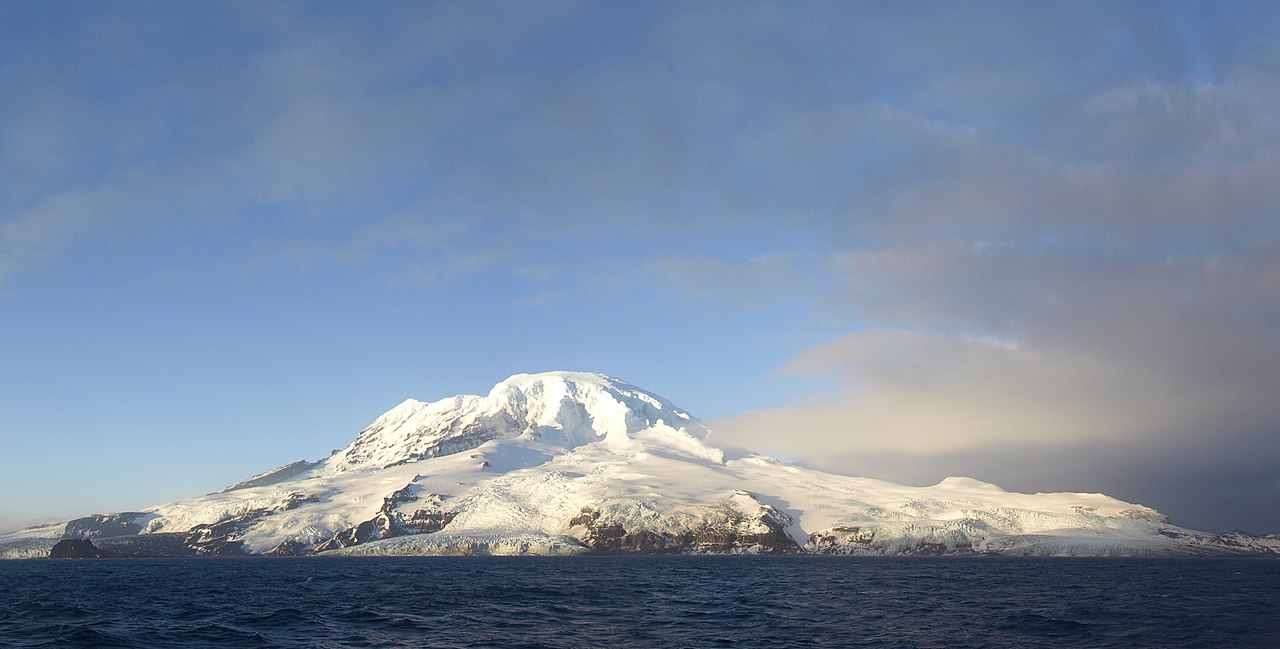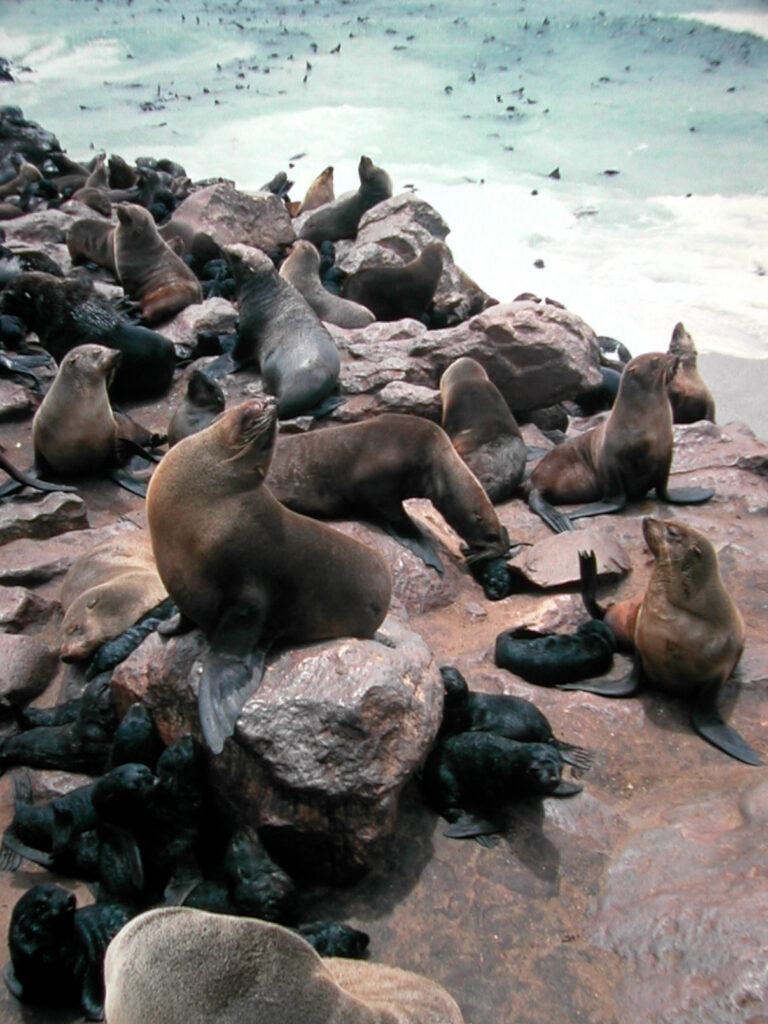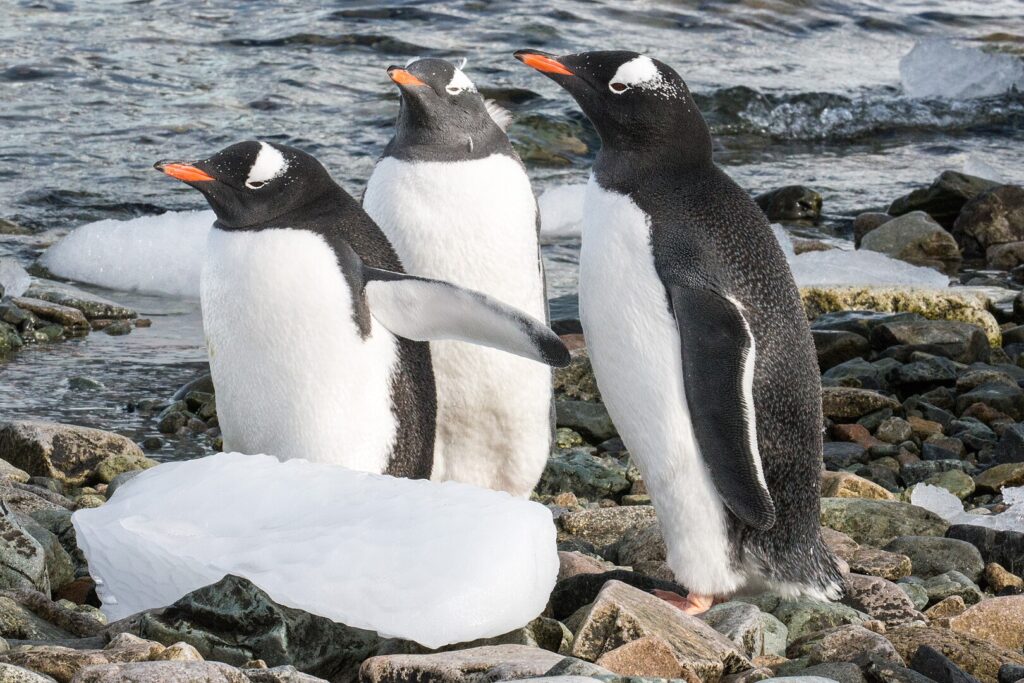Royal, golden-haired, rock climbers: which penguins have suffered from Trump’s sanctions
3 April 11:37
Today, the global and Ukrainian media have published headlines that the United States, among other things, has imposed duties on the uninhabited Gerd and MacDonald Islands, which are inhabited only by penguins. However, this is not entirely true; the islands are home to representatives of a much closer biological genus to humans, seals. After all, these animals, like humans, are mammals. "Komersant Ukrainian" has prepared an intelligence report on who exactly Trump has sanctioned on the Heard and Macdonald Islands.
Tariffs
on April 2, US President Donald Trump announced the introduction of “mirror” tariffs against almost all countries of the world (except Russia, Belarus, and the DPRK). These tariffs, according to the White House, will be half of the tariff that a particular country has imposed on US goods. For example, China allegedly imposes a 67% tariff on U.S. goods, so the U.S. imposed a 34% tariff on Chinese goods.
For those countries that do not impose special duties on American goods, a basic tariff of 10% was introduced.
Trump called the introduction of such trade barriers “Liberation Day” and said that this day would go down in US history as the beginning of the restoration of the American economy and greatness.
Interestingly, the comparative table released by the White House provides data on tariffs against 185 countries, but Russia is not on the list. But there are the Herd and Macdonald Islands, which were subject to a basic 10% tariff. The only thing is that there is not a single person on these islands.
The Gerd and Macdonald Islands
Geography
The Herd and Macdonald Islands belong to Australia and are considered its external territory. They consist of 4 volcanic islands located between Madagascar and Antarctica in the Indian Ocean. The total land area of the archipelago is 372 km², with a coastline of about 101.9 km.
These islands are among the most remote places on Earth. They are located approximately 4100 km southwest of Perth, 3850 km southwest of Cape Leeuwin in Australia, 4200 km southeast of South Africa, 3830 km southeast of Madagascar, 1630 km north of Antarctica, and 450 km southeast of the Kerguelen Islands. The islands are uninhabited and can only be reached by sea, which takes two weeks by ship from Australia.
Gerd Island, the largest of the group, is a mountainous island with an area of 368 km², covered by 41 glaciers (80% of the island is covered with ice) and dominated by the Big Ben massif. The much smaller and rocky Macdonald Islands are located 44 km west of the island of Heard. They consist of McDonald Island (186 m high), Flat Island (55 m high), and Meyer Rock (170 m high), with a total area of approximately 2.5 km².
The Gerd and Macdonald Islands contain the only two active volcanoes on Australian territory. Mawson Peak, which is the peak of the Big Ben massif on the island of Herd, rises 2745 meters above sea level, making it higher than any mountain in other Australian states and territories, with the exception of some peaks in the Australian Antarctic Territory.
The climate of the islands is Antarctic or tundra, mitigated by their maritime location. The weather is characterized by low seasonal and daily temperature fluctuations, constant and usually low cloud cover, frequent precipitation and strong winds. Snow falls throughout the year.
In 1997, the archipelago became a UNESCO World Heritage Site.
History and the present
The islands were discovered in the mid-1850s. The American sailor John Heard on the ship “Oriental” saw the island, which was later named after him, on November 25, 1853, while traveling from Boston to Melbourne. William Macdonald on the ship Samarang discovered the neighboring Macdonald Islands six weeks later, on January 4, 1854.
The United Kingdom officially claimed the island of Guerd in 1910, when the British raised their own flag and installed a lighthouse.

The islands became Australian territory in 1947.
The islands are currently uninhabited. From time to time, scientists appear there, and ships and vessels of the Australian fleet sail around the islands. Limited fishing is allowed in the surrounding waters. Despite the desertification, the islands even have their own .hm Internet domain.
Читайте нас у Telegram: головні новини коротко
Fauna of the islands
The main local animals are insects, as well as large populations of seabirds, seals and penguins.

Seals
Seals are the only mammals that will be affected by Trump’s tariffs on the Heard and Macdonald Islands. Their fishery on Heard Island lasted from 1855 to 1910 – during which time 67 ships visited these places, nine of which were shipwrecked off the coast. The relics that have survived from that time include fat boilers, barrels, hut ruins, graves, and inscriptions.
The fishery has led to seal populations either becoming locally extirpated or reduced to levels too low for economic exploitation. Modern seal hunters visited the islands from Cape Town in the 1920s. Since then, seal populations have generally increased and are protected.
Species of the seal family such as southern elephant seals, Antarctic fur seals and sub-Antarctic fur seals breed on the Gerd Islands. Sea leopards regularly visit the islands in winter to rest on land, although they do not breed on the islands. Crab seals, Ross seals, and Weddell seals also occasionally visit the islands.

Penguins
Penguins are the largest family that will be affected by Trump’s tariffs on the islands, as they are the most numerous birds here. There are 4 species of penguins breeding here: king penguins, gentoo penguins, macaroni penguins, and eastern climbing penguins. The penguins mainly colonize the coastal mudflats and grassy lands of Gerd Island and have previously been recorded on the plains and ravines of Macdonald Island.

King penguins
King penguins (Aptenodytes patagonicus) are the second largest species of penguin after the emperor penguin. They are easily recognized by their bright orange-yellow spots on the neck and chest. They are about 90 cm tall and weigh up to 16 kg. The population of king penguins on the island of Gerd is the most studied seabird species on the island and has shown impressive growth since the first record in 1947/48, with the population doubling approximately every five years for more than 50 years.
King penguins differ from most other penguins in their unique breeding cycle, which lasts 14-16 months. Instead of building nests, they balance one egg on their feet, covering it with a special fold of skin. They feed mainly on fish, especially lanternfish, as well as squid, diving to depths of up to 300 meters in search of food.

Gentoo penguins
Skipper penguins or Gentoo penguins (Pygoscelis papua) are the third largest species of penguin after the emperor and king penguins. They can be recognized by a white stripe above the eyes and a bright orange beak. Gentoo penguins reach a height of about 75 cm and weigh 5-8 kg. They are one of the fastest swimmers among penguins, capable of reaching speeds of up to 36 km/h.
Unlike many other species of penguins, Gentoo penguins are not migratory and remain near their colonies throughout the year. They build nests of stones and plant material in open areas. Their diet consists mainly of krill and small fish, and they can dive to a depth of 200 meters to hunt. Gentoo penguins have the widest range of all penguins and are found on sub-Antarctic islands throughout the Southern Ocean.

Goldfinch penguins
Goldfinch penguins (Eudyptes chrysolophus) belong to the group of crested penguins. They got their name because of their orange-yellow crests, which resembled the fashionable “macaroni” hairstyle of the 18th century. These penguins reach a height of about 70 cm and weigh 4-5 kg. They have black plumage on their backs and a white belly, as well as a red beak.
Goldfinch penguins are one of the most numerous penguin species in the world, although their population has declined in recent decades. They feed mainly on krill (about 90% of their diet), as well as small fish and squid. These penguins can dive to depths of up to 100 meters in search of food. They breed on steep rocky slopes, building nests of stones. The female lays two eggs, but usually only the second chick survives.

Eastern rock climbing penguins
Eastern climbing penguins (Eudyptes filholi), also known as eastern crested penguins, are smaller relatives of the golden-haired penguin. They are about 55 cm tall and weigh 2-3.5 kg. They can be distinguished from Goldfinch penguins by their smaller size and thinner yellow eyebrows that do not meet on the forehead.
These penguins are known for their ability to navigate rocky shores, which is where their name comes from. They nest in colonies on steep rocky slopes or coastal terraces, building shallow holes lined with pebbles and plant material. Like other crested penguins, they lay two eggs, but usually only one chick survives. Their diet consists mainly of krill and small fish, as well as squid. To hunt, they can dive to a depth of 100 meters and stay underwater for up to 2 minutes.
Other animals
In addition to penguins, a number of other seabirds nest on the Gerd Islands, including three species of albatrosses, petrels, gulls, terns, and cormorants.
Gerd Island has a relatively small number of terrestrial invertebrate species compared to other Southern Ocean islands, which corresponds to the low species richness of the flora.
Only one spider lives on Gerd Island, but there are 54 species of ticks and 8 species of millipedes. Beetles and flies dominate the known insect fauna of the island of Gerd, which includes up to 21 species of ectoparasites (associated with birds and seals) and up to 13 free-living species.
Summary
In general, despite the isolation of the Gerd and Macdonald Islands, species richness is considered moderate rather than impoverished, although the number of recorded endemic species is low. So it is likely that Trump’s idea to impose tariffs on these islands is not so bad.
Читайте нас у Telegram: головні новини коротко









